The Musician's Room: An Interesting Concert Gig, Nov. 02, 2006
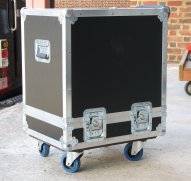
Thursday November 2nd I was booked to provide a large P.A. for an outdoor corporate gig. You know the kind of thing: A crowd of about a thousand, lots of suits walking around, concierge service, a national artist doing a private show, and lots of money riding on a smooth operation. This one, however, turned out to be pretty cool, in more ways than one. In this area, the first week in November is when the weather turns and forty-degree swings between noon and night are no surprise.
The venue: A beautiful brick plaza on a college campus, situated about a hundred yards from any road or parking lot and accessible only by bricked footpaths. Nearest power is a 250’ run from the stage, but three-phase power with neutral is available. We’ll have a nicely designed stage with a show camera projecting the artist on large screens on each side.
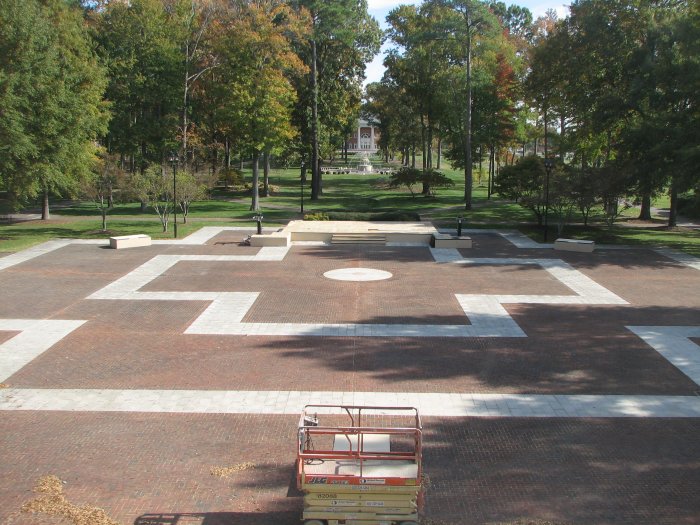
The artist: He’s an up-and-coming vocalist with four albums out who’ll be performing on acoustic guitar and piano. He’ll be flying out with a lead guitarist and arriving three and a half hours before the performance for sound check. Artist's rider requires us to supply two independent, stereo in-ear monitor systems with their own mixes as well as wedges at the frontline for backup. They want D.I.s for four acoustics.
The gear: I'll be working with a well-designed, packaged P.A. with bi-amped EV speaker clusters that will be flown about twenty feet above the ground on Genie Superlifts. The system features adaptive processing to maximize the speaker systems and is housed in good roadcases. Because my company is working multiple sites and events on the event date, we are renting some items. I’ll be mixing through a rented, mid-sized digital console, the Yamaha M7CL, with memory, a virtual FX rack, and scene management.
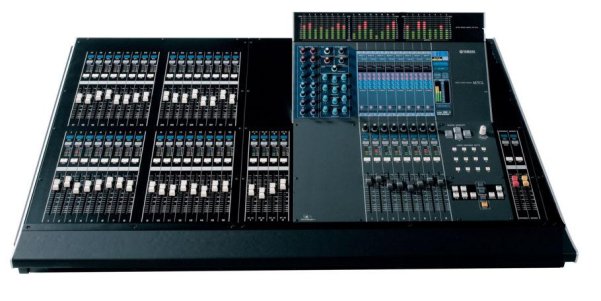
Though it is a great system, my gear will be something of a pick-up bunch, parts of various systems, none of which I’ve ever used. The rented console is new this year and I’ve neither seen nor worked with it. In another day and age, I might have been a little frantic about using this new-technology console for the first time on a large, high-pressure gig without any hands-on time and without someone experienced around, but in today’s “modern world”, the equipment leasing company pointed us to the Yamaha Professional Products site where I was able to download the manual for the console in PDF format, as well as a console configuration program. With those in hand, I sat down at my PC and setup the console and my mix, patching in graphic EQs for the main speaker clusters, setting beginning EQs for each channel, routing the channels to the various mixes needed, configuring my in-ear monitor mixes, naming my channel strips, etc. The night before the gig, I’ll download all this poop onto a USB thumb drive, pop the thumb drive into the digital console, and upload the data. The console will assume the form and layout I want. I’ll raise the faders, ring out the system, and be ready for soundcheck. Not half bad and it gives me lots of confidence in my ability to get everything routed.
The crew: I’ve been assigned three great guys with bright attitudes and appropriately wacky senses of humor to help me. One of them is an audio engineer and the other two are musicians. We’ve got a forty-foot Ryder truck and a reasonable timeline for load-in and setup. My boss, who’s worked with most of the gear except the console, will pop in at important points and hold my hand with gear I don’t know.
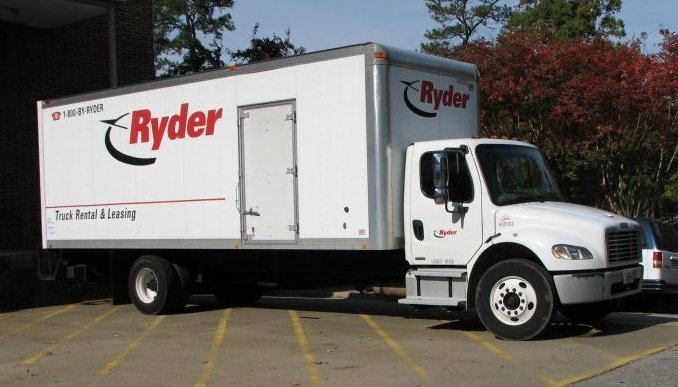
The ubiquitous Ryder 40' truck. We had six of these on the production. I miss the yellow color.
The complications: The weather forecast is for a high of 61’F. We expect thunderstorms in the morning, followed by intermittant showers by noon, and then arrival of a cold front with twenty MPH winds during the afternoon. By showtime at 7:30pm, we’re expecting 50’ with a wind chill taking it to 40’. When we begin strike and load out, the temp is expected to be 41’ with wind chill taking it into the low 30’s.
The night before the event, delivery times for some of the gear began to fall behind. Some of it wouldn’t arrive until an hour before sound check. Other parts wouldn’t arrive until AFTER. The console made it pretty much on time the night before, but on its arrival, I discovered that its firmware was out of date and it couldn’t read my pre-built configuration file. As a result, on Wednesday night I had to rebuild the console configuration right into the console, from scratch and from memory. Okee-dokee!
Load out from the lock-up was at 9:00am on the morning of the event.
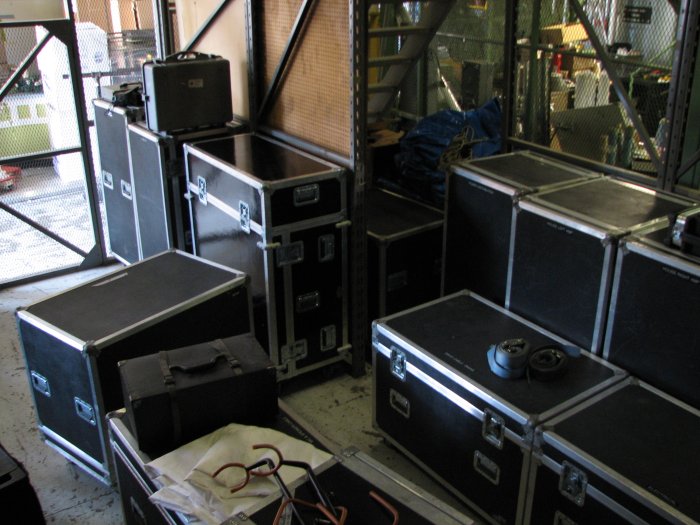
The artist-series Yamaha grand piano arrived at 1:00pm and was tuned at 2:00pm. Sound check was scheduled for 4:00pm. Doors at 7:00pm, show at 7:30pm. We had to knock off the noise for a while at 2:00pm, while the piano tuner worked the cold piano into shape, so I took some snappies. Here’s an overview of the venue from just house-right of the mix position:
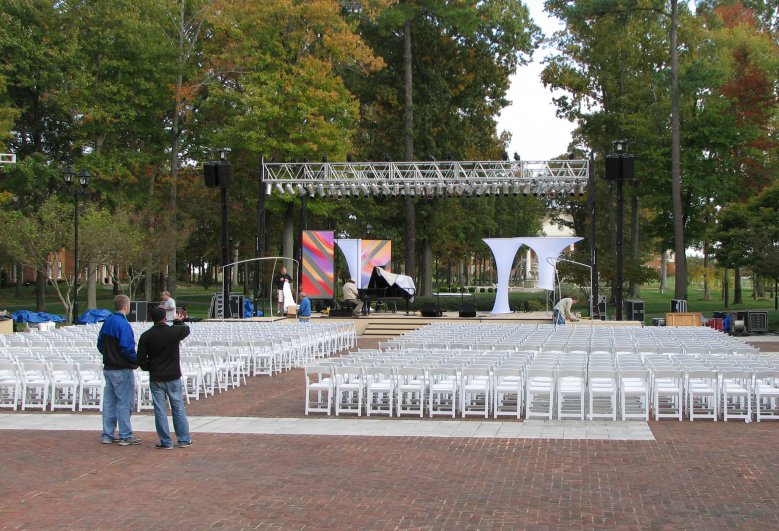
Below is a view of the shock boxes to house left as we are building up. The left box is the power distro with the three phase plus neutral coming in via the blue Meltric connector at the bottom and power going to the amp racks via twist-locks. Just before we powered up, a grip from another group disconnected and separated two segments of the main power cable about halfway down its 250-foot run to allow his road case to roll through(!) Whoops. No power…
The right box is the house-left amp rack. Top to bottom: input patch panels, EV adaptive processing units, output patching via speak-ons, and the three stereo amps designated to subs, biamped full range, and side-fills. We left the subs in the barn because there was no bass or kick drum. We also left the monitor amp rack in the barn, using the side-fill amps instead.
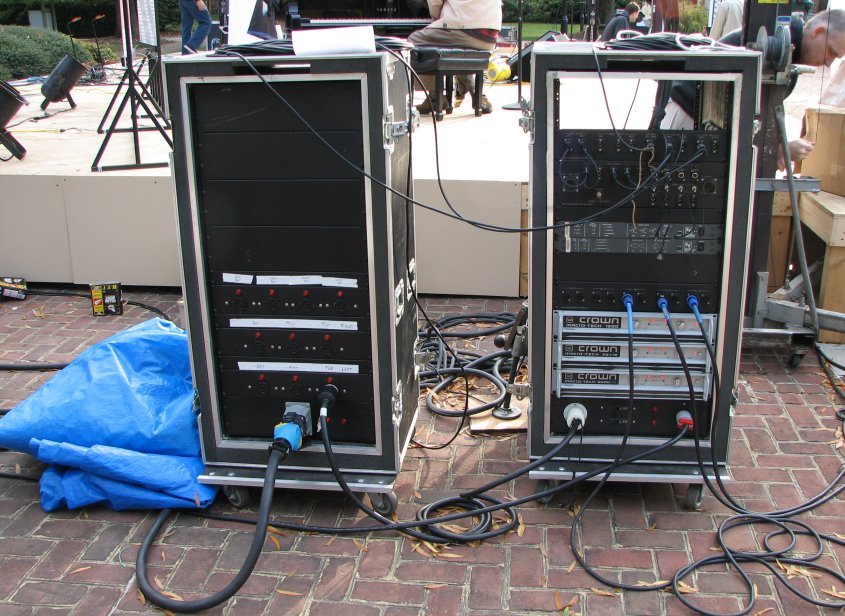
Turning to look left from the above picture, here’s the “workbox”, with drawers for mics, clips, batteries, D.I.s,, work lamps, walkie-talkies, accessories, etc. It made the system an organized joy to work with. Don’t leave home without it! I think that's the power cable box behind.
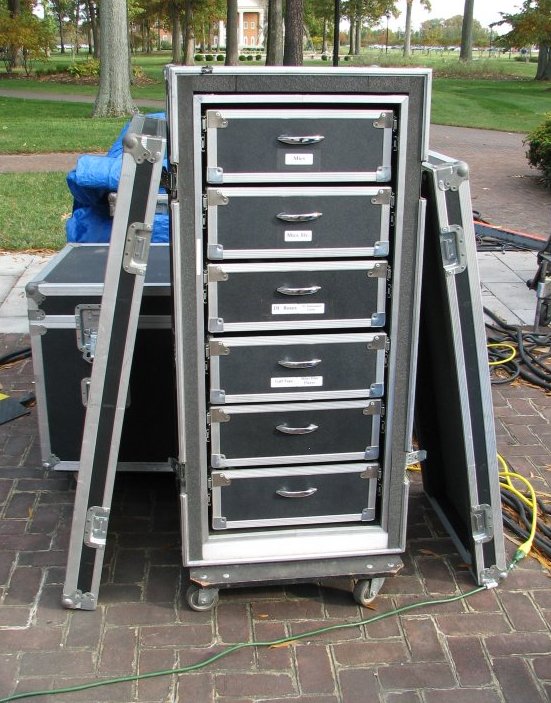
House right amp rack, nearly identical to the left rack. The system is designed to allow you to jump a phase of power from one amp rack to the other via twist-lock, as we did here. My blue snake can be seen entering the picture from the right. Off-screen to the right, the snake jumps over the main cables for the lighting group. I placed an empty main speaker group box on wheels over the lighting cables and ran the snake OVER it at right angles to maintain signal hygene via separation. Only distance and crossing at a right angle can keep the tremendous amount of magnetic hash generated by the dimmed lights out of your cables. Amazingly, we only dealt with hum in one line all day, and it was easily eliminated by moving the signal to another line on the snake.
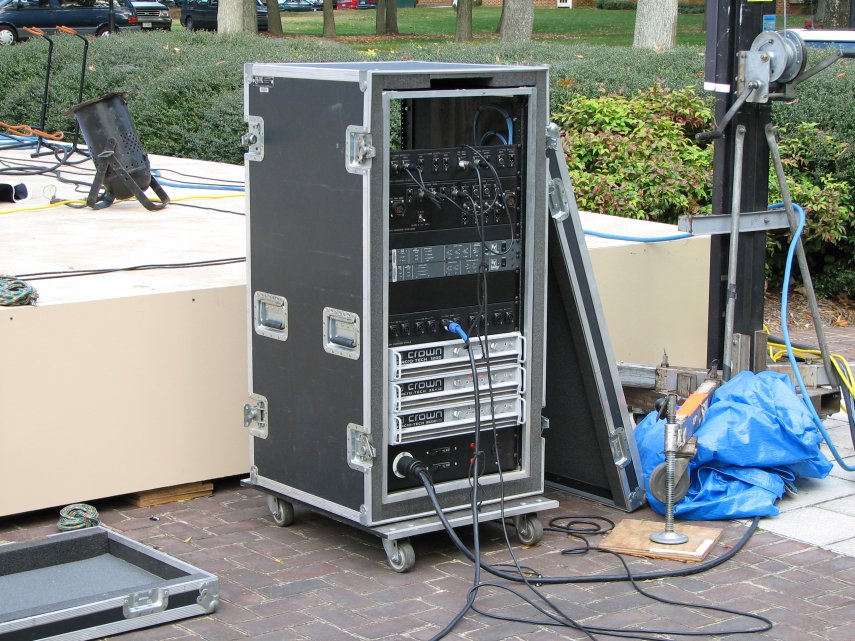
My “office”, the Front Of House mix position, is coming together here: mixer on the left, resting on the snake box, auxiliary turret rack on the right containing the CD player, resting on a monitor box. The Shure wireless in-ear monitor transmitters are stacked on top. When it arrived later, we added in a second turret rack with a pair of Electrosonic hand-held wireless mic receivers for the hosts. Note the absence of an effects rack! The graphic EQs and effects reside in the “virtual rack” aboard the mixer. That took some getting used to and involved a bit of a surprise as well, but we won’t go into that.
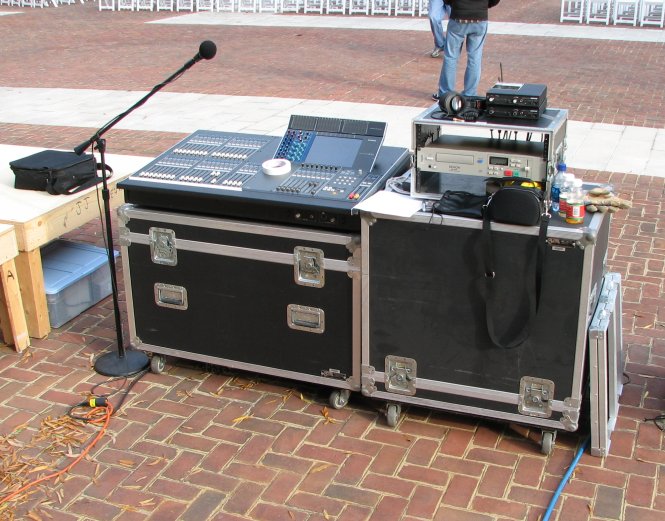
We had just faxed all the lines and gained-up all the mics when the above picture was shot. I was about to save a snapshot of the console. Right then, another grip from another group disconnected the FOH power feed to “share” our power source. For some reason, the console didn't save my settings and twenty minutes worth of my work were lost. There’s just no use being provincial or getting in a huff because everyone is pressed for time and starved of electricity, so you simply report the situation to those in charge, correct the mistakes, and go on. The cascading screw-ups do threaten the timetable and your nerves, though. We ended up going into sound check without the system rung out as well as I would have hoped.
Below we see “Charlie the Tuner” hard at work. This gives us a chance to see the Genie Superlift at left with EV speaker cluster temporarily flown near the front lighting truss for sound check. The lifts were brought back in after sound check to be artistically shrouded with fabric, then flown back out. Note the “tornado” stage gobos being assembled, and the main lighting trusses. The frames are going up for the arched side panels that will shroud the backstage area and hide my black boxes.
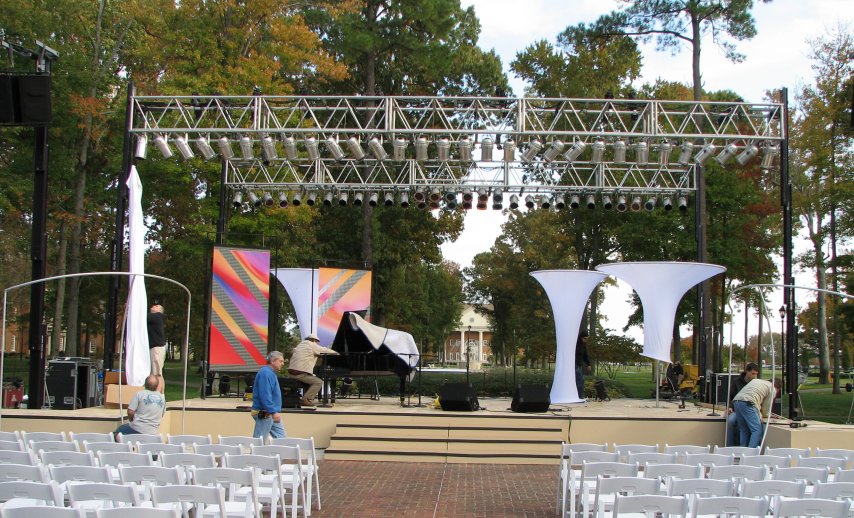
When we turn around to the back of house we can see two of my three great grips clowning for the camera. Meet Mark “Snake” and Eric. Mark is a guitarist and Eric, though a drummer, is a remarkably normal person. Just kidding...
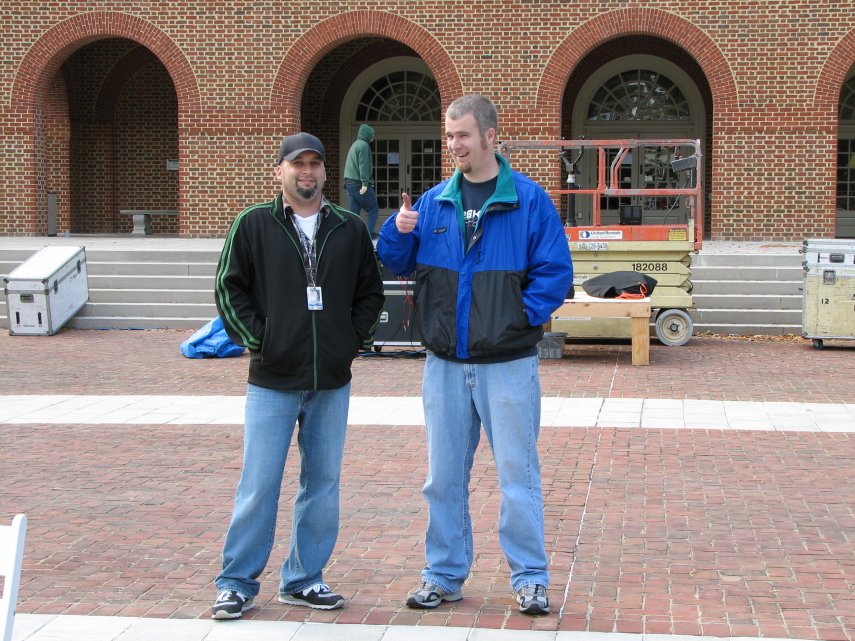
Not shown is Ryan. These three guys threw themselves into the arduous job of assembling this production with cheer and gusto that inspired me and made my life easy. My “office”, the FOH position, is barely visible between them. Behind Eric you can see the riser for the production camera and the scissors jack for the follow spot operator. We used every bit of the jack’s fifteen feet of altitude.
Some folks had golf carts to get around and I had mine! It stayed handily backstage all day and navigated the brick footpaths easily, though it did raise some eyebrows… Note the blue tarps throughout the early shots. Once we assembled the gear, we immediately bagged it to prevent damage from the predicted rain. Speaker cones don’t like rain! We got what amounted to a light misting.

Around 5:00pm,the sun went down and the early crowd began to arrive. Around 6:30pm, with the system up, sound check completed, the lines and batteries checked, and tunes rolling quietly, my thoughtful wife brought over a warm dinner. I got ten minutes of a blissful break while sitting down in a nearby warm building with a beautiful gal. After the bite, I switched into a heavier coat, put on the game face, and prepared for the main event.
SHOWTIME!
Time to earn our pay! Here’s my office just before I "darkened ship" for the production. Note the extra turret rack on top and the all-important but rarely-used folding chair. You may just be able to see that the transmitters for the in-ear monitors are gone: The artists asked to work without them, so we went entirely with the wedges.
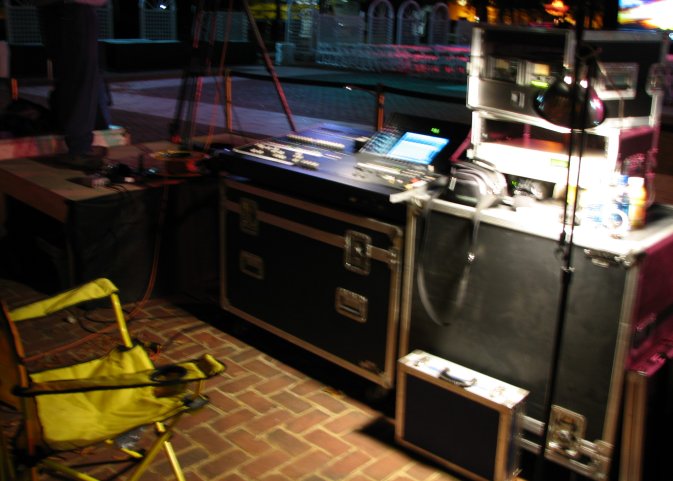
Here’s a little detail shot on the console. Note the thirty-two channel faders grouped on the left. Below the touch screen is a "central logic" section that controls one bank of eight channels at a time, in tandem with the touch screen and that bank of knobs directly to the left of the touch-screen. In this shot, it is controlling the far-left bottom group of eight.
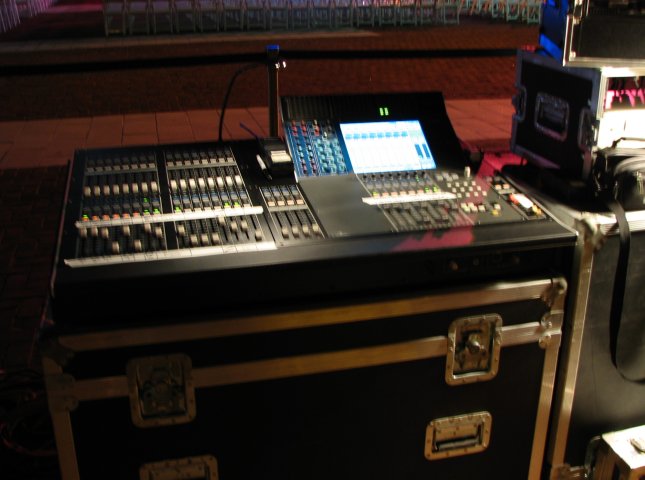
And now we get to the payoff! First, the view the concert-goers had as they entered the venue. What a magnificent design job! My friends Bill, the lighting director, and Diana, the set designer, really created a wonderful mood.
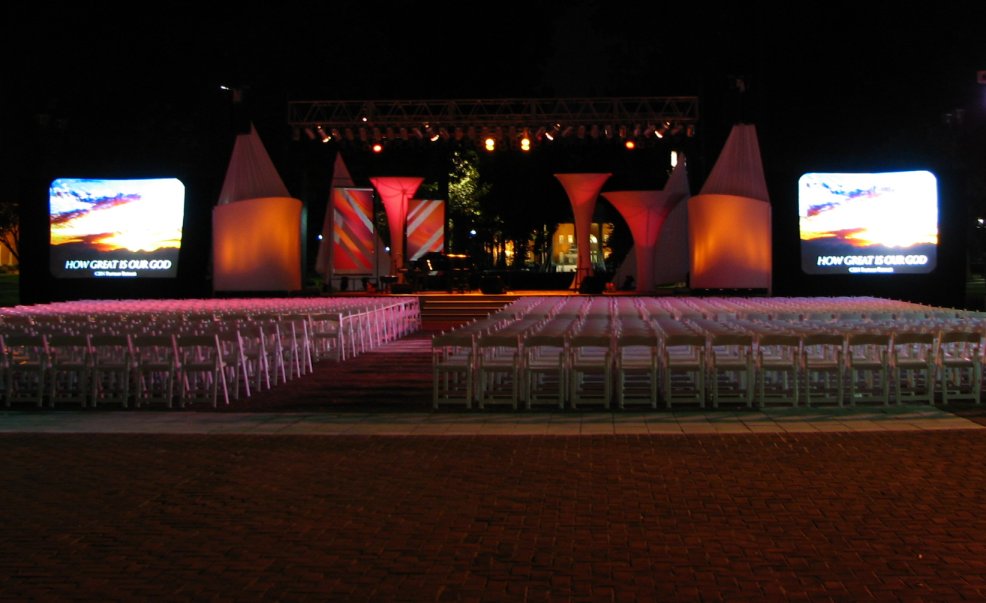
An interesting aside: About an hour before this pic was shot, the winds picked up and the house-right projection screen was blown over backwards by the wind, directly onto me! I just happened to be working backstage behind it with my back turned when the soft center of the screen landed on my head. Thank goodness I was there! The hardware in the area would have sliced up the screen, had not my head stopped the fall. And thank goodness the frame didn't land on me. I know, I know: "That's using your head." It took a minute to get the attention of the video crew to come get the thing off me and set it back up. They added extra weights to the screen's feet and we had no further incident.
Heres a wider shot showing the “flame pots” at each end of the stage and the house lighting trusses. Two more flame pots were located at the other end of the audience area.
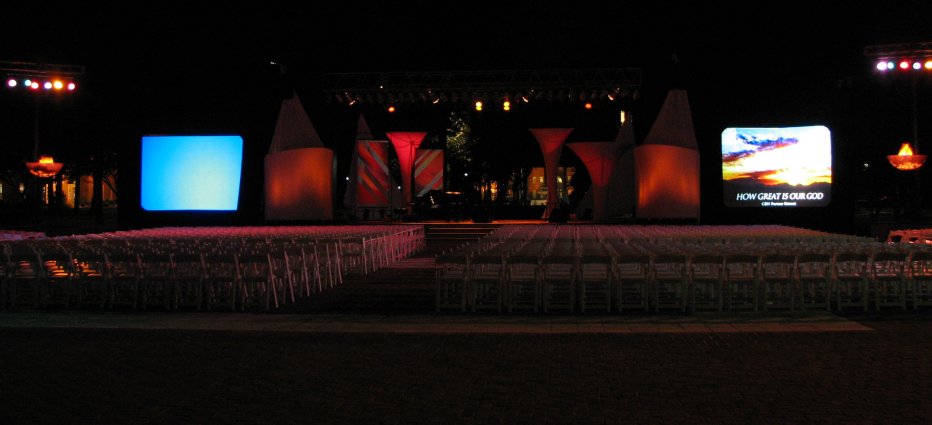
...And ACTION! Notice that the whole group of stage accoutrements were variable in color and brightness to match the mood. They also had moving shapes projected on them. Some really world-class work, here.
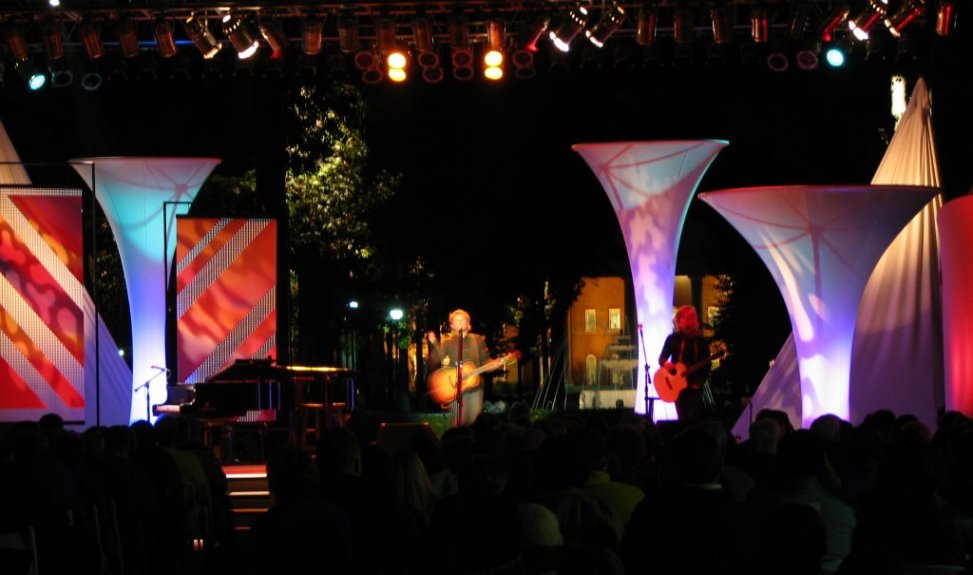
A telephoto shot, offset because it was taken from the FOH position, reveals an interesting set feature: The stage was designed to be open-backed in order to frame the lovely lighted fountain on the plaza behind it as attendees walked up the center aisle. At showtime, the full moon was centered over the stage in a marvelously clear sky. Gorgeous!
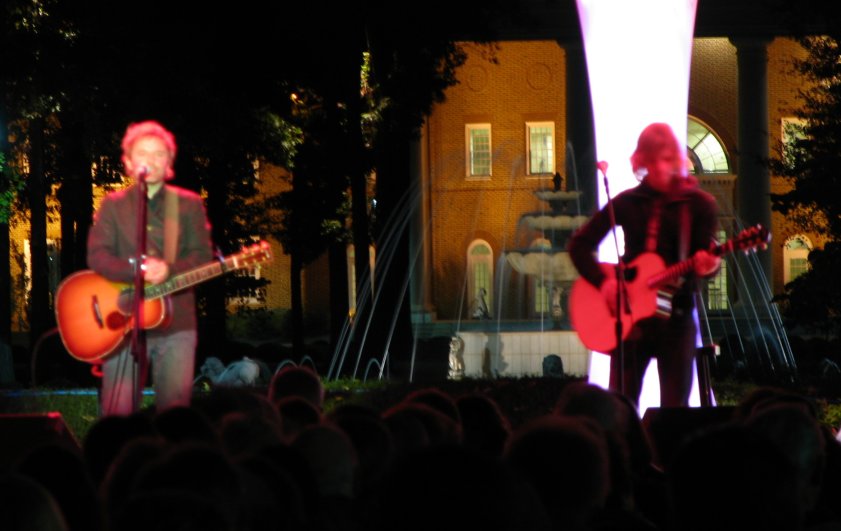
How cold was it? Cold enough that though he played very gently, the lead guitarist (right) popped a string on the very first song! The guitars progressively detuned themselves throughout each song and had to be retuned at each break. The lead guitarist put his hands in his pockets at every chance. Before I turned off the work light to my right for the concert, I warmed my hands over it. I was rather amazed that the piano held tune reasonably well, even though it was used for the last part of the concert, when the temperatures had dipped to nearly 40 degrees.
With a pumped-up, enthusiastic crew, we were able to strike the whole system, load it into the truck, and deliver it back to the lockup in about two hours. Shazzam! You always pray for five things on a gig like this: That you keep your cool and are pleasant with everyone around you, that you make your deadlines, that you make a good product and please the client and artist, that you don't make mistakes, and that other's mistakes aren't blamed on you. I feel like we were able to accomplish these goals this time, so I was very pleased. My great crew and my leaders contributed tremendously to a successful completion of the assignment. All in all, it was a great experience, though... very cool!
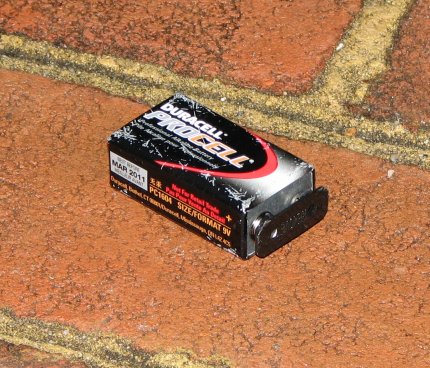
I found this survivor on the plaza a couple of days later
It was in the backstage area, unused but stomped.
= =
=


















